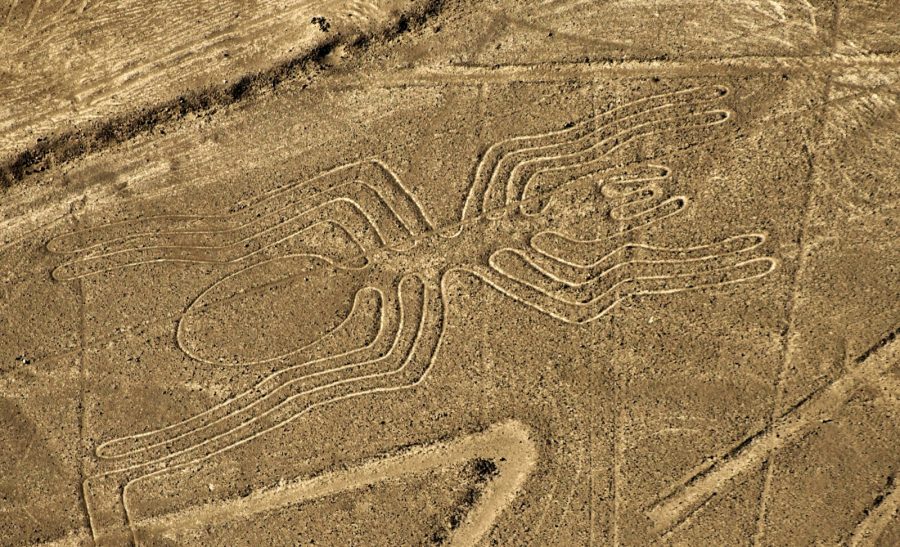A man driving last Saturday on the road crossing the nature reserve, exactly where the lines are, went into the area of the celebrated geoglyphs (drawings on earth), created almost 2,000 years ago and considered World Heritage of Humanity, and passed over them.
According to the Culture Ministre, the result showed three figures severely damaged with “deep tracks” recorded, in the area of approximately 50 meters wide and 100 meters long in the pampa – where the ancient lines are located.
After damaging them, the driver of the truck followed his route without noticing that another driver in the area was recording him with his phone. The person later uploaded the video on social media and created commotion among the world.

The video went viral a few hours later and made angry not only hundreds of Peruvians but also the same authorities who started right away the operation to capture the driver. He then was located about three hours later, near the city of Nazca.
The alleged perpetrator, identified as Jainer Jesús Flores Vigo, for whom the prosecution requested nine months of preventive detention, alleged that he entered the area due to problems in the tires of the truck and that he did not know that it was a heritage zone.
After his arrest, the man was finally released.
It happens ‘every day’
Many signs warn drivers about the place they are traveling in the course of the Pan-American Highway, which crosses the archaeological site.
Despite the fact that the spectacular geometric figures and animals can only be observed from the air, many of the lines can be seen in an area from the road.
It is not the first time that this archaeological site, one of the most mysterious in Latin America, suffers damages of this type.
In fact, according to the person in charge of the conservation of the Palpa and Nazca Lines, Jhony Isla, it “happens every day.”
“What happens is that, this time, there were some people who made a film and they uploaded the images to social networks. It’s a situation that happens constantly. There are also people who throw garbage there, next to the pampa,” he told the radio station Programs of Peru.
Among the most notorious international cases of damage in the area was the protagonist in 2014 by Greenpeace activists, who invaded the area of the famous hummingbird to place placards claiming environmental protection as a backdrop for a UN climate conference, which took place in Lima.
A year later, another person entered the area and wrote his name in one of the geoglyphs.
Until now, the meaning of the fantastic lines that go from simple geometrical tracings to complex designs such as spiders, whales, and even monkeys, is unknown.
Some researchers consider that it is a calendar, others claim that it was an astronomical observatory and the most daring ones affirm that they were forms of communication with extraterrestrial beings.
Source: BBC
